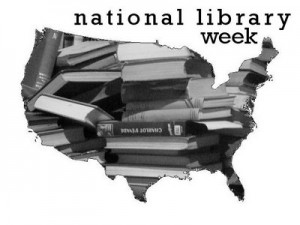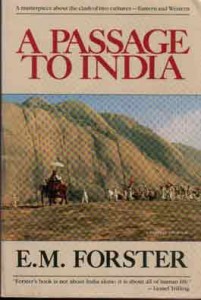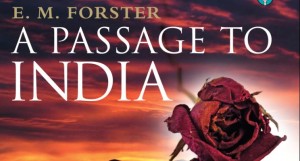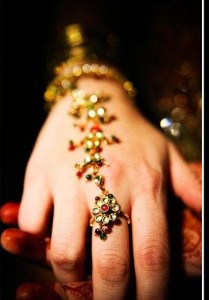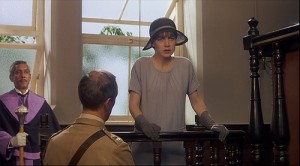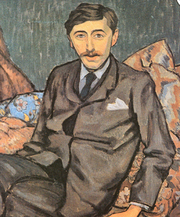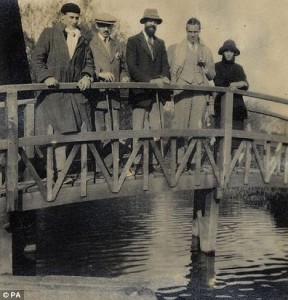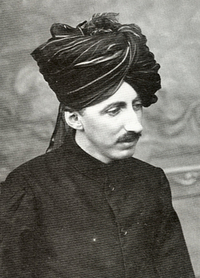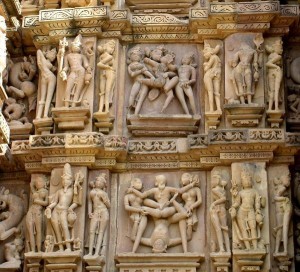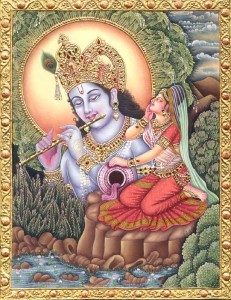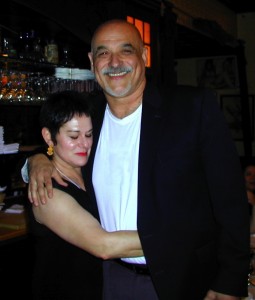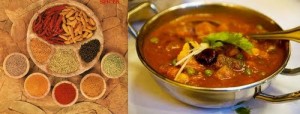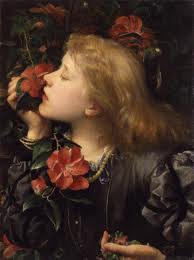In a recent flurry of excited creativity, I composed – with the blissfully complicit love, encouragement, and materials of Neil Morris ! –
A perfume which immediately brought these words to my lips:
A Passage To India.
A fragrance which I asked to be bottled and sent to Serena Ava Franco for her birthday- As a joint gift from us both.
Neil went to his computer and created a gorgeous label; our pleasure was palpable.
Now, truth above all.
I’ve never been to India [not yet !]- but Neil has.
It changed his life, beyond a doubt.
Someday, I pray that it will change mine as well.
My associations began in very early childhood with a loving, noisy, inclusive Sikh family boasting two sets of twins, and 10 children in toto.
They frame my lifelong love affair with All Things Indian.
The Singhs were the seat of unconditional love; I preferred their highly aromatic, happy chaos to that of my own household, and at age six I was resolutely determined to marry their twelve-year-old son Atman-
In whose limpid dark eyes I fervently wished to drown, frankly.
Do I digress?
There is method to my madness…
No one had the heart back then to enlighten me regarding the social and cultural inappropriateness of my desires.
I had to uncover it the brutal way, by accident.
In my eyes, I could perceive no earthly reason why two people from vastly differing religious, cultural, and social strata couldn’t find eternal happiness.
E. M. Forster’s novel explores some of the basic conflicts of humanity, prejudice, hypocrisy, and perceived racial and moral superiority.
Can folk from different worlds truly, deeply befriend one another?
Understand one another?
These are themes that would recur over and again in Forster’s work.
A Passage To India is set in 1920’s colonial India, amidst a complex web of mistrust and manners-during which a mysterious occurrence leads to litigation.
Two English women- Mrs. Moore, the elderly mother of Chandrapore’s city magistrate, and Adela Quested [ the young teacher whom Mrs. Moore brings to India as her son’s future intended ] express the wish to experience ‘the real India’.
It is this wish which leads young Dr. Aziz to organize a day trip to the nearby Marabar Caves- at great personal expense.
It all goes horribly wrong, culminating in disaster, disillusionment, and betrayal.
.
Forster himself is a fascinating subject.
At King’s College, Cambridge, Forster became a member of the Apostles, a literary-minded circle which spawned many of the future Bloomsbury Group, with whom he continued to remain intimate throughout his long life.
He lived with [and traveled with] his mother until she died; a Humanist and conscientious objector during WWI, Forster signed up with the International Red Cross and journeyed to Alexandria, Egypt.
E.M.Forster also served as personal secretary to the Maharajah of Dewas in the early 1920’s, an experience which spawned The Hill of Devi, a factual written account of his experience of Indian aristocratic life.
When paired with A Passage To India, one benefits from a more complete image of Anglo-Indian relations in the pre-partition era.
What has all this to do with perfume, you may well ask ?
Long story, short:
The sincere attempt to evoke a seductively earthy /devotional duality.
India itself is steeped in it; Serena, Neil and I feel the depth of this complexity in our own lives…
And the fervent wish to give a lasting pleasure to someone dear.
I had been agonizing earlier that day about Serena’s upcoming birthday; what could I possibly do that would be good enough for someone so unique and precious?
The exploration of a newly uncovered earthy woody absolute from the Pacific Northwest inspired my desire to build something exotic and fulsome.
Neil had a sample of it, and he knew that it would astound me.
My first sniff told me that I wanted to bed down plush roundest florals and spice- Indolent pleasure-seeking aromas – upon a base with resoundingly smoky/ woody/ patchouli-like/ vetiver facets to echo the highly spiritual AND earthy.
A heady marriage of the carnal and sacred
[And all from a sustainable natural source from the U.S.]
Another Indian aspect existed purely in the drydown of this glorious substance- a certain similarity to Mysore sandalwood, which happens to be my Achilles’ heel, it intoxicates me so.
How fortunate that, without the guilt of utilizing an oversourced beauty [OR the horrific expense of a well-aged vintage substance] –
It was possible to create the distinct impression of many of the opulent qualities we often associate with Indian culture:
The intimation of finest sandalwood, vetiver and patchouli nuances without their actual addition, sweetly wed to the headiness of floral generosity and a spiciness which tantalizes.
When the perfume felt complete, we both agreed without hesitation.
The name came to mind before I fully realized all the subtler subtext, something which happens to me fairly frequently 😉
[I never cease to be astounded at how the mind works; the processes alone fill me with reverential awe!]
Here was OUR answer.
East meets West, the merging of Foster’s view as an ‘internal outsider’ with our vision of that which is imagined, and that which is experienced.
A Passage To India smelled to Neil of the India he explored in his youth; to me, of the India of childhood longing.
With Neil’s partnership, a beautiful birthday present was soon to be on its way to our mutual friend!
All that was missing was the perfect paper, ribbon, card…sentiments.
[And ALWAYS a lipstick kiss- as any friend of mine well knows.]
Sadly, this little perfume is very costly to make.
And I only possess a bit of it- I gave the lion’s share to Serena.
But I’ll happily share a small vial of the perfume with one of you good readers!
Just leave a comment below . Draw ends Friday April 15th.
Photo Credits:
Train to Marabar – 123nonstop.com
A Passage From India label-csaword.co.uk
Gorgeous child – vanityfair.com
Monsoon Wedding – 1001afilmodyssey.blogspot.com
Shy sikh boy – smithsonianjourneys.org
Wedding hand – emilydewan.blogspot.com
Adela in court – sweetsundaymorning.blogspot.com
Portrait of Foster by Roger Fry – mural.uv.es
Forster, Ralph Partridge, Lytton Strachey, et al – thehistoryblog.com
E.M.Forster, 1921 – mayaalexandri.com
Statuary at Khajuraho -go4indya.blogspot.com
Serena – courtesy of Serena on Facebook
Krishna with flute – amazingdiscoveries.org
Neil and Ida – courtesy of Michael at Sniffapalooza
Vindaloo – seriouseats.com
Indian spices -bombayharbor.com
Dame Ellen Terry by Watts – npg.si.edu
-Ida Meister, Senior Editor

